Canada GDP contracted -0.3% mom in May, matched expectations. Total economic activity remained approximately -2% below prepandemic level in February 2020. Overall, 12 of 20 industrial sectors contracted, with services-producing down -0.2% and goods-producing down -0.4%. Preliminary information indices that GDP would grow 0.7% in June, and 0.6% in Q2.
Eurozone CPI rose to 2.2% yoy in Jul
Eurozone CPI rose to 2.2% yoy in July, up from 1.9% yoy, above expectation of 2.0% yoy. Energy is expected to have the highest annual rate in July (14.1%, up from 12.6%), followed by food, alcohol & tobacco (1.6%, up from 0.5%), services (0.9%, up from 0.7%) and non-energy industrial goods (0.7%, down from 1.2%).
Eurozone unemployment rate dropped to 7.7% in Jun, EU dropped to 7.1%
Eurozone unemployment rate dropped to 7.7% in June, down from 8.0%, better than expectation of 7.9%. EU Unemployment rate dropped to 7.1%, down from 7.3%.
Eurostat estimated that 14.916m people were unemployment in EU, of whole 12.517m in the Eurozone.
Eurozone GDP grew 2.0% qoq in Q2, EU up 1.9% qoq
Eurozone GDP grew 2.0% qoq in Q2, well above expectation of 1.5% qoq. EU GDP grew 1.9% qoq. Among the Member States for which data are available for the second quarter 2021, Portugal (+4.9%) recorded the highest increase compared to the previous quarter, followed by Austria (+4.3%) and Latvia (+3.7%), while Lithuania (+0.4%) and Czechia (+0.6%) recorded the lowest increase. The year on year growth rates were positive for all countries.
Germany GDP grew 1.5% qoq in Q2, -3.4% below pre-pandemic level
Germany GDP grew 1.5% qoq in Q2, below expectation of 2.0% qoq. Comparing to Q2 2020, GDP was up a price-adjusted 9.6% and a a price- and calendar-adjusted 9.2%. GDP was still -3.4% lower compared to Q2 2019, before the pandemic.
Destatis said, “after the coronavirus crisis had caused another decline in economic performance at the beginning of 2021 (-2.1% in the first quarter, according to most recent calculations), the German economy recovered in the second quarter. This was mainly due to higher household and government final consumption expenditure.”
Swiss KOF economic barometer dropped to 129.8, economy still on a strong expansion path
Swiss KOF economic barometer dropped from 133.3 to 129.8 in July. But the indicate is still clearly above the long-term average. KOF added, “the economy is still on a strong expansion path, although the high pace of recent months may not to be sustained.”
“The outlook for manufacturing, foreign demand, construction, financial and insurance services as well as private consumption remains favourable but is not quite as positive as in the previous month. In contrast, the outlook for accommodation and food service activities and for other services is improving,” KOF said.
France GDP grew 0.9% qoq in Q2, slightly above expectations
France GDP grew 0.9% qoq in Q2, slightly above expectation of 0.8% qoq. GDP still stood -3.3% below the level of Q4 2019, before the pandemic.
Final internal demand (excluding inventory changes) made a positive contribution to GDP growth this quarter (+0.9 points after +0.1 points in the previous quarter). Gross fixed capital formation (GFCF) accelerated (+1.1% after +0.4%), as households’ consumption expenditure (+0.9% after +0.2%).
In Q2 2021, imports (+1.9%) increased more than exports (+1.5%). Overall, foreign trade made a slightly negative contribution to GDP growth this quarter: –0.1 points, after –0.5 points in the previous quarter. Lastly, the contribution of inventory changes to the growth of the GDP was slightly positive this quarter (+0.2 points after +0.4 points in Q1 2021).
ECB de Guindos: It’s medical question first and foremost
Vice President Luis de Guindos said yesterday that “substantial monetary support” is needed for the economy “for some time to come. He added, “even if recovery is successful, there is still a lot of uncertainty.” Pace of inflation will “slow down again” next year as a number of one-off factors wane, such as the temporary VAT cut in Germany last year.
He also said that when to end the PEPP is a “medical question first and foremost”. He added, “it depends on whether the vaccination campaigns are successful in combating the Delta variant and whether new, more resistant variants appear.”
Japan industrial production rose 6.2% mom in Jun
Japan industrial production rose 6.2% mom in June, above expectation of 5.0% mom. Output also revised much of the -6.5% mom decline in May. Manufacturers expected production to fall -1.1% mom in July and then rise 1.7% in August.
A government official said, “we are continuing to see the impact of the global chip shortage but it’s moderating somewhat, mainly for automakers… But manufacturers’ August output plan may not fully reflect the impact of the spread of new COVID-19 variants on global and domestic economies, as well as the risk of a prolonged chip shortage.”
Also released, unemployment rate ticked down to 2.9% in June, down from 3.0%. Retail sales rose 0.1% yoy in May, slightly below expectation of 0.2% yoy.
BoJ Noguchi: Commitment has no strong effect in changing inflation expectations
BoJ is clear on its commitment to bring inflation “stably exceeds” 2% target. But board member Asahi Noguchi criticized, “personally, I don’t think this commitment has a strong effect in changing inflation expectations”
“It may take some time, but a more realistic policy would be to maintain the current powerful monetary easing to steadily improve the output gap, so that demand increases enough to prop up wages and inflation”, he added.
He’s also an advocate to push bond yield target to 15- to 20-year bonds. In particular, if a shock event pushes the economy into a serious downturn, BoJ should ease further “without hesitation”. “What’s important is to look at the basic trend of the economy, “he said. “Unless this trend is broken, it’s important to patiently sustain the current very powerful monetary easing.”
US GDP grew 6.5% annualized in Q2, missed expectations
US GDP grew at annual rate of 6.5% in Q2, well below expectation of 8.2%. BEA said: “The increase in real GDP in the second quarter reflected increases in personal consumption expenditures (PCE), nonresidential fixed investment, exports, and state and local government spending that were partly offset by decreases in private inventory investment, residential fixed investment, and federal government spending. Imports, which are a subtraction in the calculation of GDP, increased”.
US initial jobless claims dropped to 400k, worse than expected
US initial jobless claims dropped -24k to 400k in the week ending July 24, above expectation of 365k. Four-week moving average of initial claims rose 8k to 394.5k.
Continuing claims rose 7k to 3269k in the week ending July 17. Four-week moving average of continuing claims dropped -54k to 3291k, lowest since March 21, 2020.
Eurozone economic sentiment rose to record 119.0, strong industrial and services confidence
Eurozone Economic Sentiment Indicator rose to 119.0 in July, up from 11.79, above expectation of 118.8. That’s the highest level on record since 1985. Employment Expectations Indicator was flat at 111.7, well above pre-pandemic level.
Looking at some more details, Eurozone industrial confidence rose from 12.8 to 14.6, eighth straight month of improvement and an all-time high. Services confidence rose from 17.9 to 19.3, highest since 2007. Consumer confidence dropped from -3.3 to -4.4. Retail trade confidence dropped from 4.7 to 4.6. Construction confidence dropped from 5.2 to 4.0.
EU ESI rose 0.9 pts to 118.0. EEI was unchanged at 111.6. Amongst the largest EU economies, the ESI rose sharply in France (+4.0) and, to a lesser extent, in Italy (+1.7) and Spain (+1.7). Sentiment in Germany (+0.3) and the Netherlands (-0.3) stayed virtually unchanged, while it deteriorated mildly in Poland (-0.7).
CAD/JPY resumes rally, targeting 55 day EMA
Following broad based selloff in Yen, CAD/JPY resumes the rebound from 85.40. The development affirms the case that correction pattern from 91.16 has completed, after depending 85.40 support. Further rise would be seen to 55 day EMA (now at 88.49). Sustained break there will affirm this bullish view and bring stronger rise back to retest 91.16 high.
CAD/JPY is kept well above 81.91 resistance turned support, and keeps the up trend from 73.80 alive. Such up trend is in favor to resume through 91.16 at a later stage.
Gold back about 1800, following Dollar selloff
Gold rebounded notably and reclaimed 1800 handle, following Dollar’s post FOMC selloff. The development suggests that 1791.45 support could have been defended well, keeping the rise from 1750.49 alive. Focus is now back on 1833.91 resistance. Break there will target 61.8% retracement of 1916.30 to 1750.49 at 1852.96 next.
Overall, we’d need to see Gold breaking 1916.30 resistance firmly, to give us more confidence that the corrective pattern from 2074.84 has completed. Otherwise, outlook will stay neutral for now.
New Zealand ANZ business confidence dropped to -3.8, time to start normalizing monetary conditions
New Zealand ANZ business confidence dropped from -0.6 to -3.8 in July. Own activity outlook also dropped from 31.6 to 26.3. Looking at some more details, expect intentions dropped from 13.4 to 7.6. Investment intentions dropped from 25.5 to 17.4. Employment intentions rose from 19.7 to 21.4. Cost expectations rose from 86.2 to 88.2. Pricing intentions dropped slightly from 62.8 to 61.3. Inflation expectations rebounded from 2.41 to 2.70.
ANZ said, “the combination of clear upside for the activity and inflation starting point, but downside risks in the (quite possibly not far off) future, do, on the face of it, present a conundrum for the Reserve Bank… “If they raise rates now, the odds are indeed uncomfortably high that they’ll end up reversing course before long… Inflation pressures provide an excellent reason to raise interest rates now, despite downside risks… inaction comes with risks too. It’s time to start normalising monetary conditions, even if trouble might lie closer ahead than we hope.”
Fed said economy has made progress towards its goals, full FOMC statement
FOMC keeps monetary policy unchanged as widely expected. In the accompany statement it said that “the economy has made progress” toward the the goals of maximum employment and price stability”. It added that the Committee will “continue to assess progress in coming meetings”
Full statement below.
Federal Reserve Issues FOMC Statement
The Federal Reserve is committed to using its full range of tools to support the U.S. economy in this challenging time, thereby promoting its maximum employment and price stability goals.
With progress on vaccinations and strong policy support, indicators of economic activity and employment have continued to strengthen. The sectors most adversely affected by the pandemic have shown improvement but have not fully recovered. Inflation has risen, largely reflecting transitory factors. Overall financial conditions remain accommodative, in part reflecting policy measures to support the economy and the flow of credit to U.S. households and businesses.
The path of the economy continues to depend on the course of the virus. Progress on vaccinations will likely continue to reduce the effects of the public health crisis on the economy, but risks to the economic outlook remain.
The Committee seeks to achieve maximum employment and inflation at the rate of 2 percent over the longer run. With inflation having run persistently below this longer-run goal, the Committee will aim to achieve inflation moderately above 2 percent for some time so that inflation averages 2 percent over time and longerterm inflation expectations remain well anchored at 2 percent. The Committee expects to maintain an accommodative stance of monetary policy until these outcomes are achieved. The Committee decided to keep the target range for the federal funds rate at 0 to 1/4 percent and expects it will be appropriate to maintain this target range until labor market conditions have reached levels consistent with the Committee’s assessments of maximum employment and inflation has risen to 2 percent and is on track to moderately exceed 2 percent for some time. Last December, the Committee indicated that it would continue to increase its holdings of Treasury securities by at least $80 billion per month and of agency mortgagebacked securities by at least $40 billion per month until substantial further progress has been made toward its maximum employment and price stability goals. Since then, the economy has made progress toward these goals, and the Committee will continue to assess progress in coming meetings. These asset purchases help foster smooth market functioning and accommodative financial conditions, thereby supporting the flow of credit to households and businesses.
In assessing the appropriate stance of monetary policy, the Committee will continue to monitor the implications of incoming information for the economic outlook. The Committee would be prepared to adjust the stance of monetary policy as appropriate if risks emerge that could impede the attainment of the Committee’s goals. The Committee’s assessments will take into account a wide range of information, including readings on public health, labor market conditions, inflation pressures and inflation expectations, and financial and international developments.
Voting for the monetary policy action were Jerome H. Powell, Chair; John C. Williams, Vice Chair; Thomas I. Barkin; Raphael W. Bostic; Michelle W. Bowman; Lael Brainard; Richard H. Clarida; Mary C. Daly; Charles L. Evans; Randal K. Quarles; and Christopher J. Waller.
Canada CPI slowed to 3.1% yoy in Jun
Canada CPI slowed to 3.1% yoy in June, down from May’s 3.6% yoy, below expectation of 3.5% yoy. Excluding gasoline, CPI rose 2.2% yoy. CPI common dropped to 1.7% yoy, down from 1.8% yoy, below expectation of 1.9% yoy. CPI median was unchanged at 2.4% yoy, above expectation of 2.3% yoy. CPI trimmed slowed to 2.6% yoy, down from 2.7% yoy, matched expectations.
US goods trade deficit widened to USD -91.2B in Jun
US International goods trade deficit was at USD -91.2B in June, widened from USD -88.2B, larger than expectation of USD -88.0B. Export of goods rose USD 0.5B to USD 145.5B. Import of goods rose USD 3.5B to USD 236.7B. Wholesale inventories rose 0.8% mom to USD 715B.




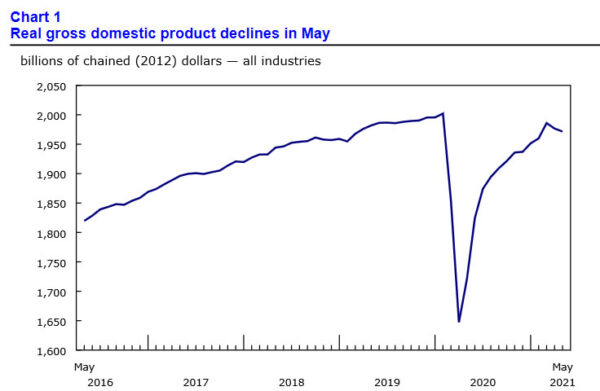
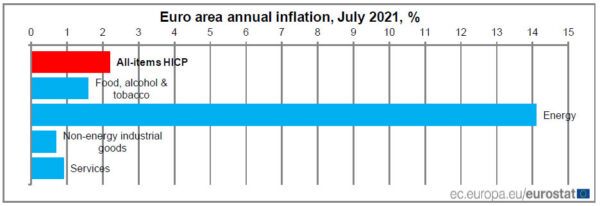
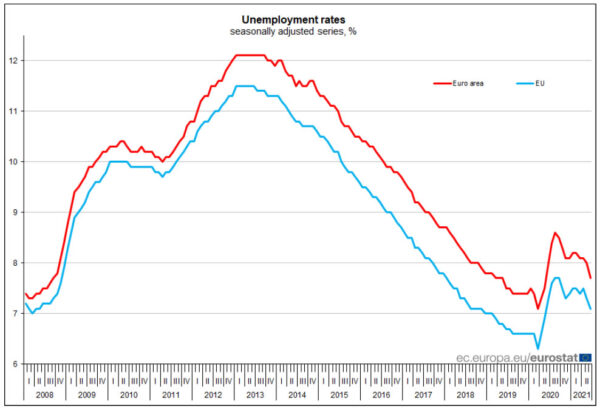
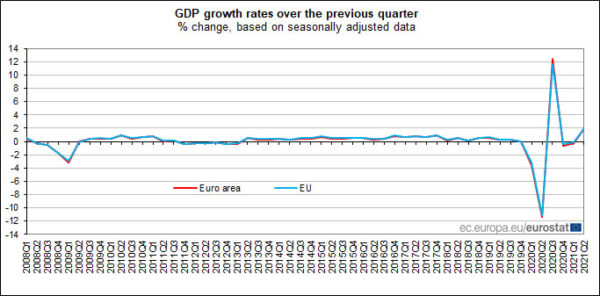
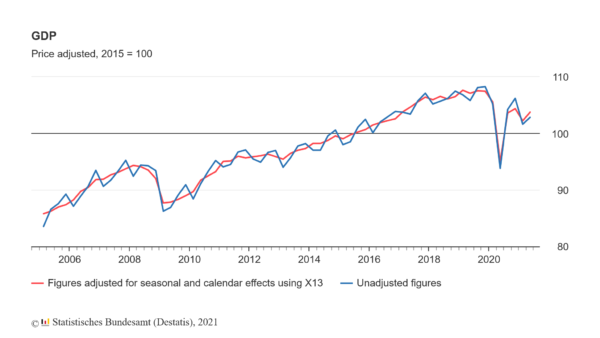
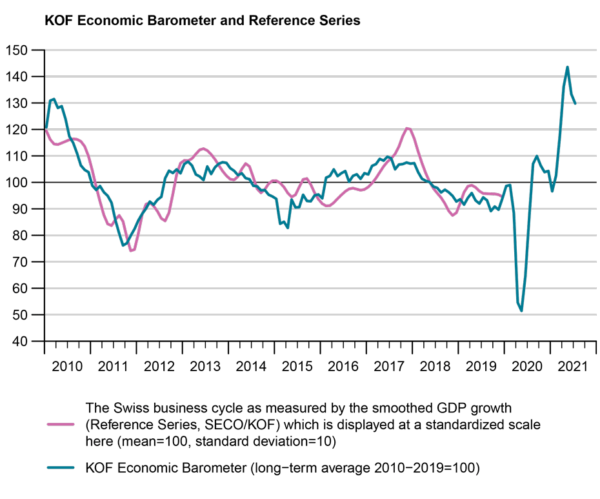
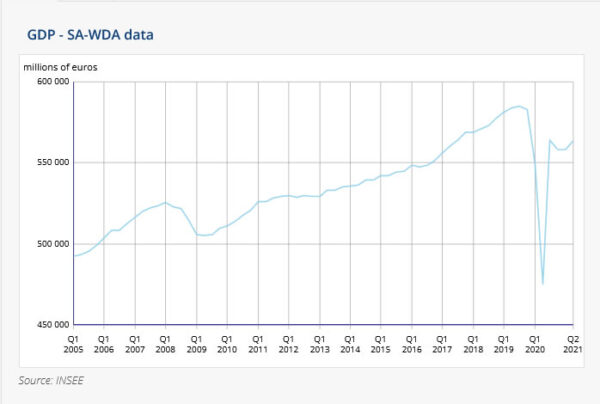
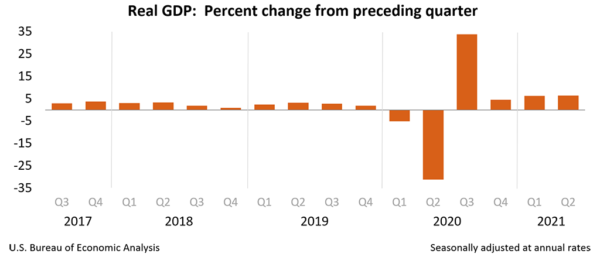
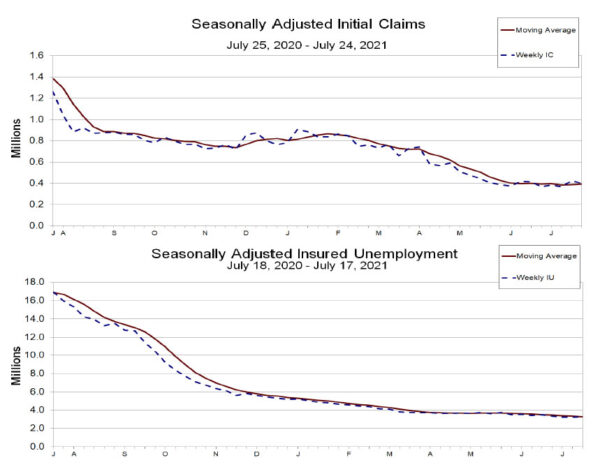
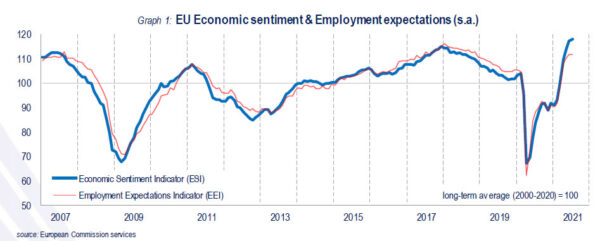

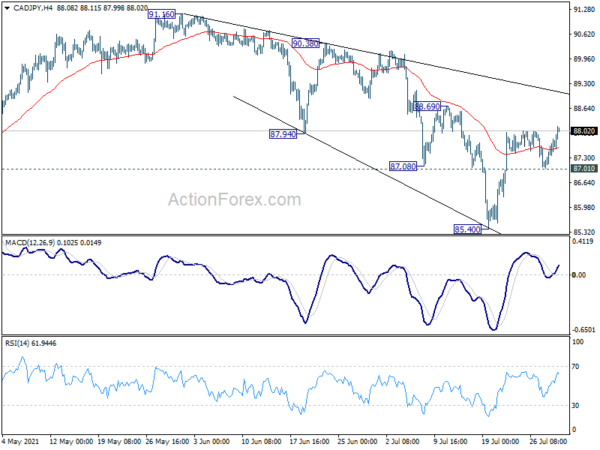
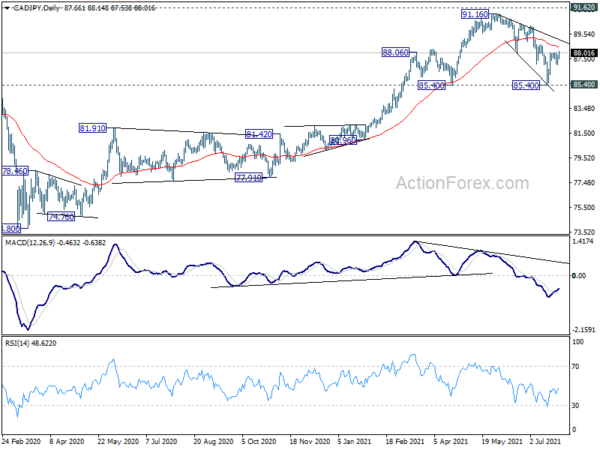
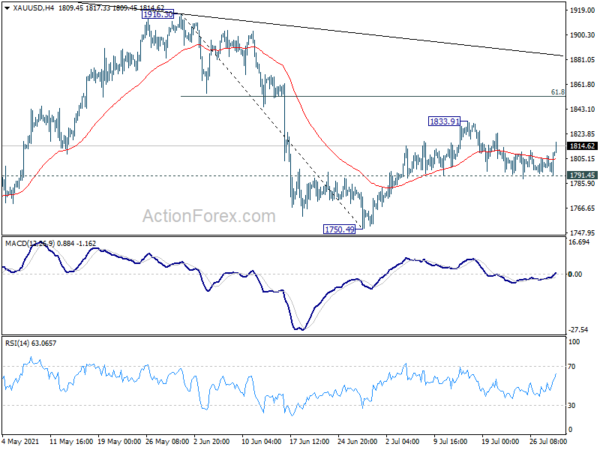
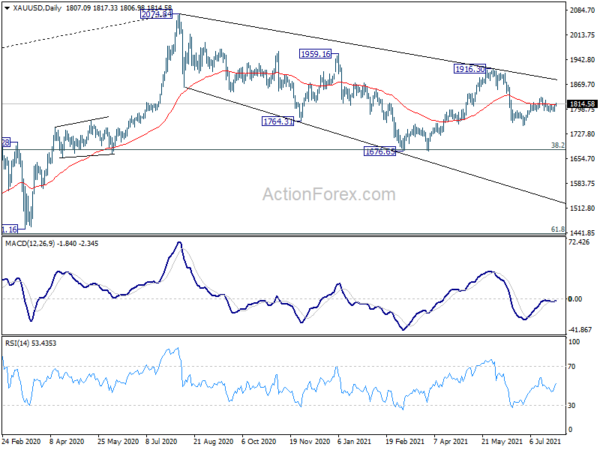
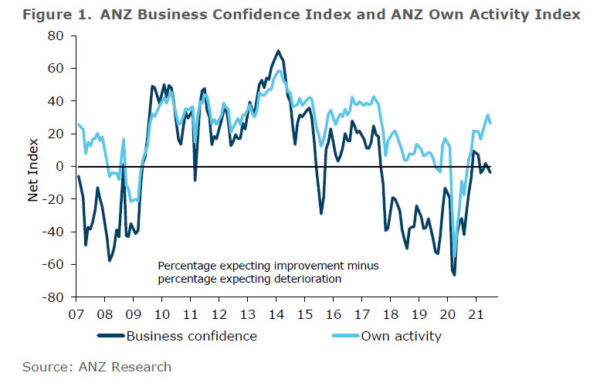
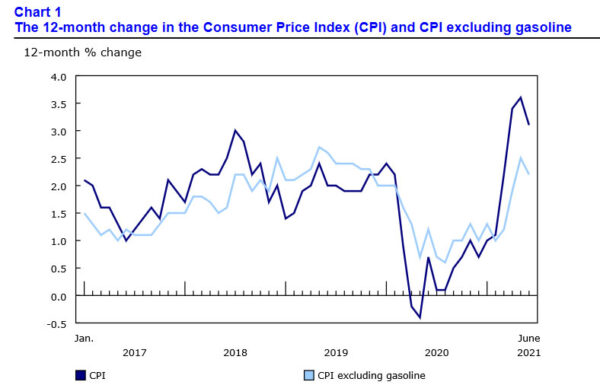
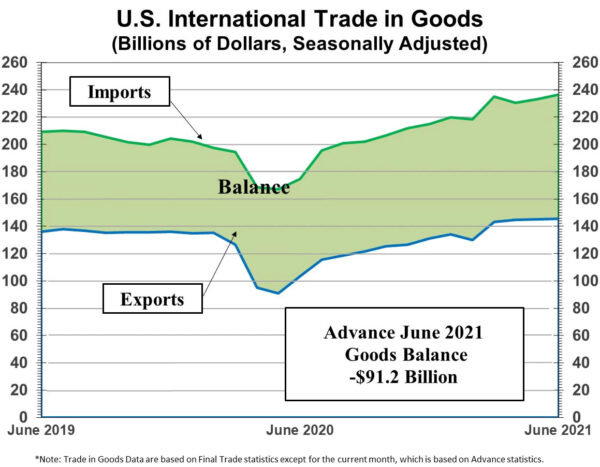

US PCE price index unchanged at 4% yoy in Jun, core PCE rose to 3.5% yoy
US personal income rose 0.1%, or USD 26.1B in June, better than expectation of -0.4% contraction. Personal spending rose 1.0%, or USD 155.4B, above expectation of 0.7%.
Headline PCE price index was unchanged at 4.0% yoy. Core PCE price index accelerated to 3.5% yoy, up from 3.4% yoy, but missed expectation of 3.7% yoy.
Full release here.